Data Objects: Information design off the screen
2015
research, prototyping, data analysis
research, prototyping, data analysis
A self-directed research project on how information can be presented through physical objects. I primarily used SLA 3D printing to create objects with textures that encode meaning, in the same way that 2D information design uses qualities like color. Conducted in-residence at Fathom Information Design.
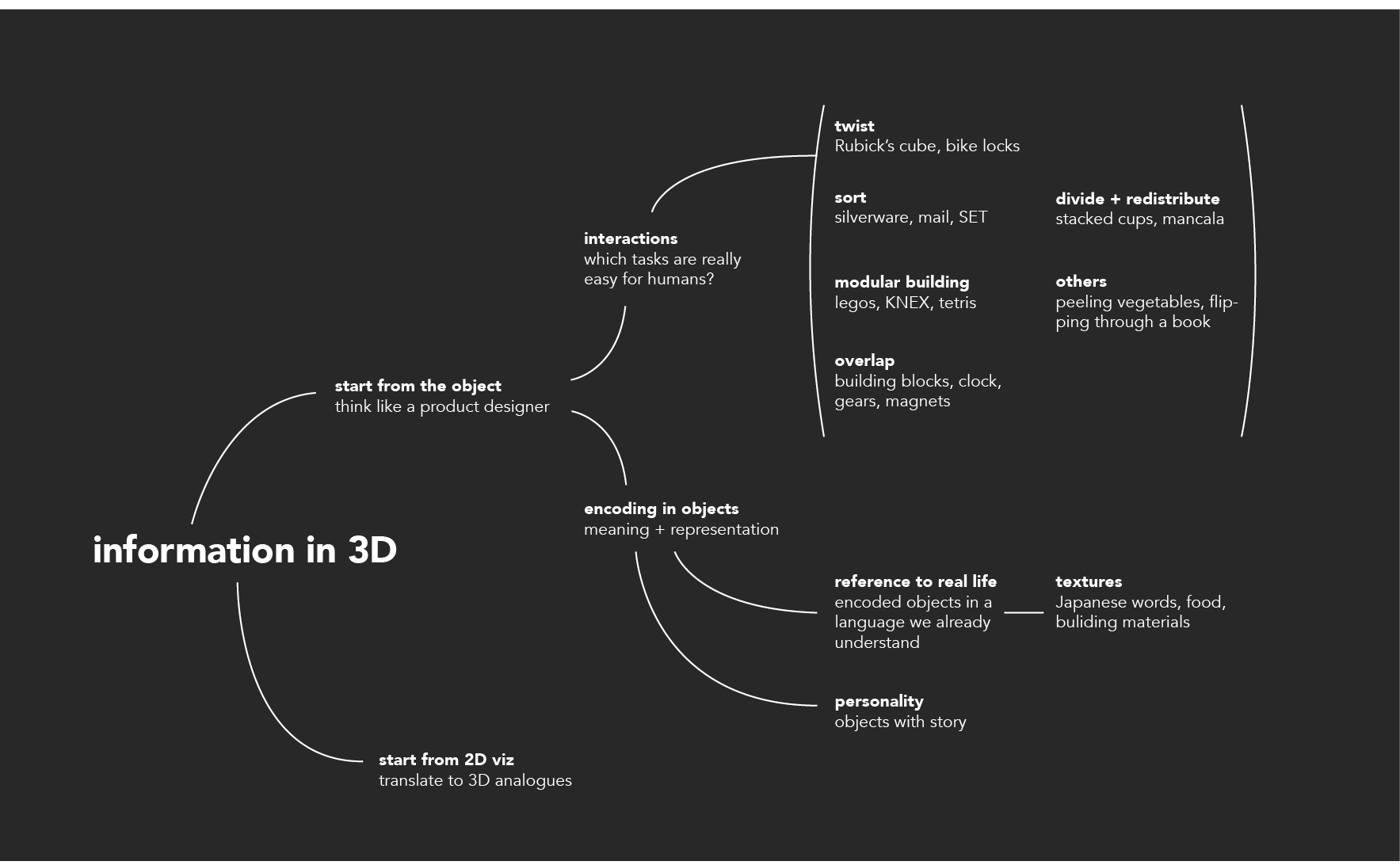
From the beginning, I decided to avoid simply extruding data visualizations that already exist in 2D, instead zeroing in on the features of physical objects that cannot be expressed on a screen, breaking them into two categories: interaction and material.
Interaction
I analyzed tasks that are very efficient for humans in the 3D world: quickly sorting and distributing many small objects, rotating and seeing multiple views of an object, and focusing on a small detail while keeping the bigger picture peripherally visible.Material
To encode meaning into material itself, I considered what makes us want to pick up and touch certain objects, as well as the subtle features that cue our immediate understanding of an object – what it’s for, who uses it, how old it is.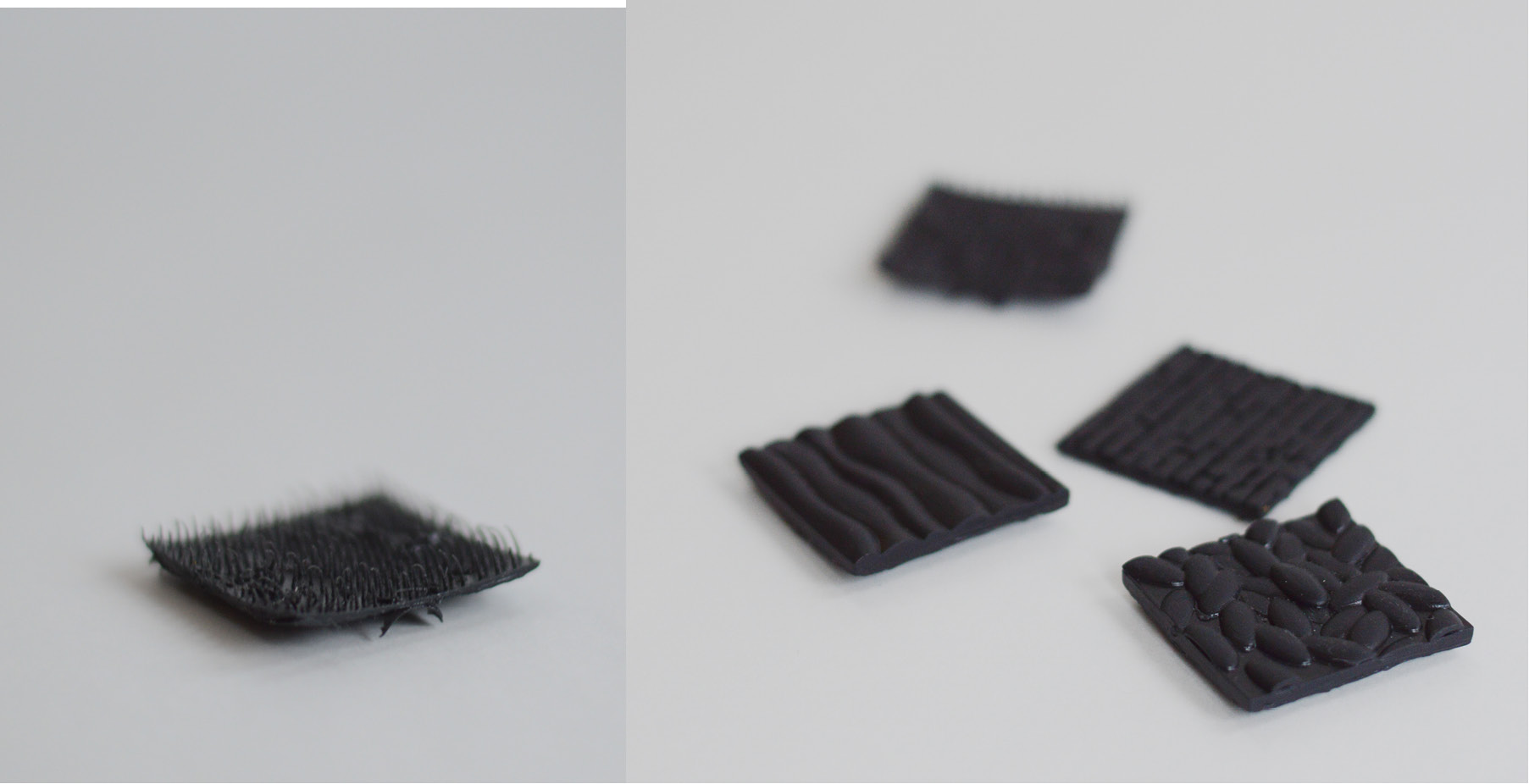
Meaning in Texture
Most of my experiments employed texture as a way to show what an object represents. If the texture is legible and successfully references familiar objects, there is no need for a key – one piece clearly represents grain, another meat – though both made of 3D printed plastic.My inspiration for these food-related textures came from a series of chocolates designed by Nendo, a Japan-based studio, which led me to a massive list of Japanese words with no English equivalent, all used to describe the textures of different foods.
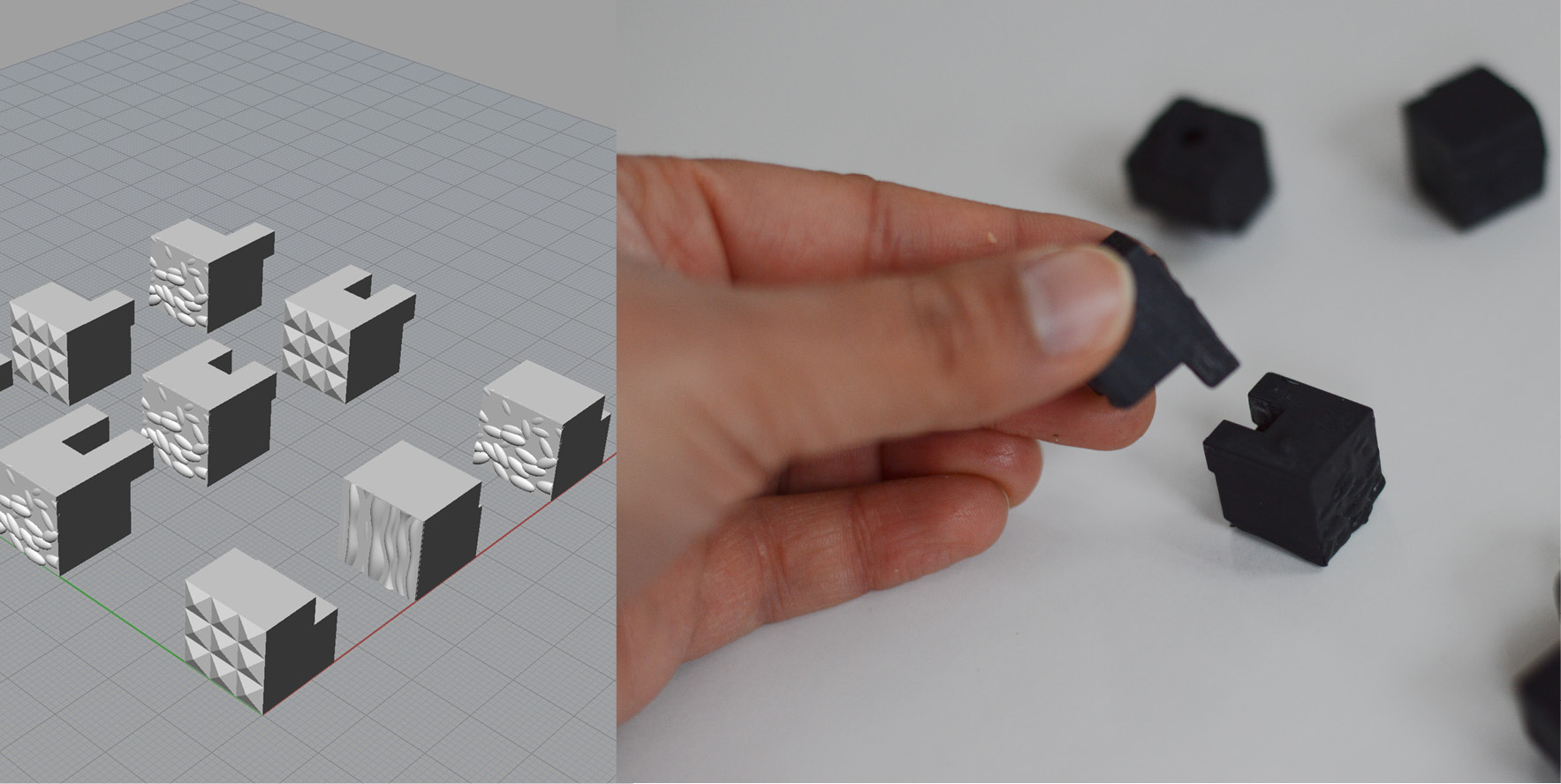
Sorting Sets
The act of sorting silverware and the card game SET inspired these textured blocks. Each varies in 3 basic factors (texture, number of prongs, depth of prongs) and within those factors they vary further to create a hierarchy of information. Certain characteristics and trends are discernible at a glance, while more subtle details reveal themselves through a closer look.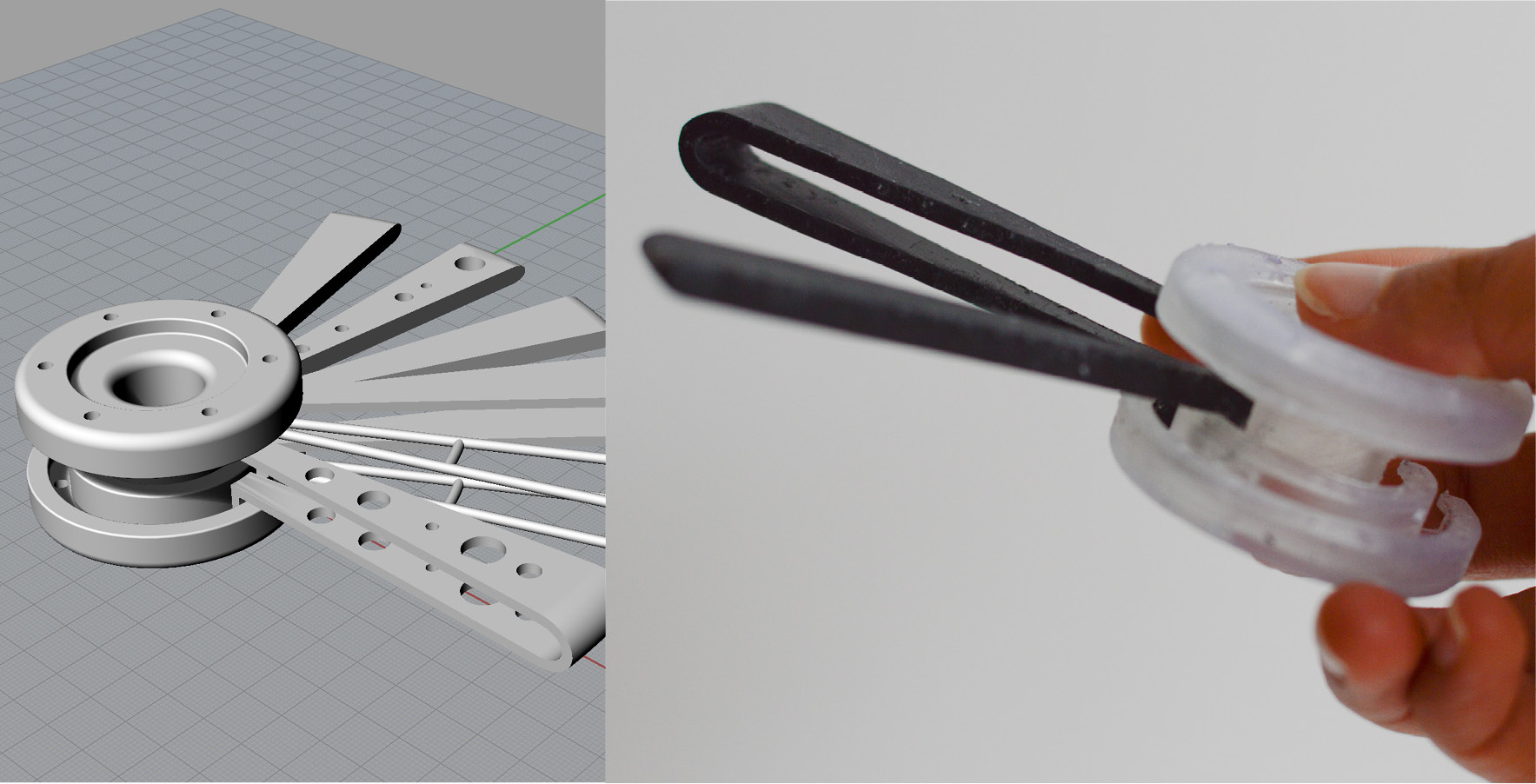
Fidget Factor
In a more spontaneous experiment, I tested what kind of objects people are compelled to pick up and play with in order to understand them. I designed this intriguing object as it came to mind, resembling perhaps a telescoping pie chart, orbiting planets, a compass. The articulating hands nest within each other, overlap and gather in different combinations, and tap into our urge to fidget.
Data by the Books
My final series of explorations were based on data from a national public libraries survey, containing indicators on library use and spending from 1992-2013. I chose to really push the idea that objects can tell stories, with the example of sea glass in mind. Sea glass experts can tell how old a piece of glass is, what kind of bottle it came from, and where it was made – all from subtle cues like texture, color, thinness, purity, and knowledge of trade routes.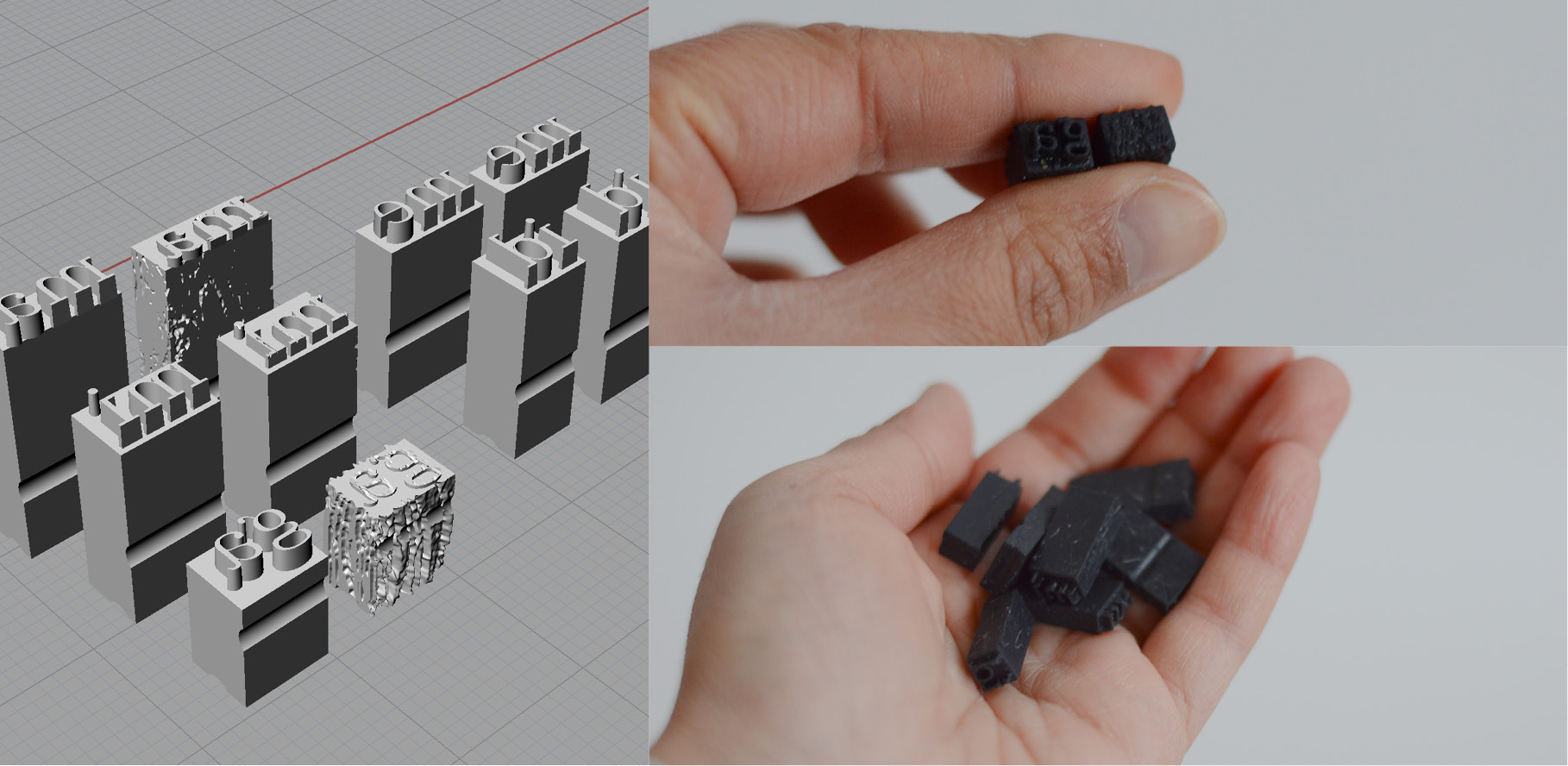 I let the content of the data itself inform my design: referencing the metal type used in letterpress printing, with each piece of type representing a state in 2003 (left) and 2013 (right). The height of each piece reflects how much money each state’s libraries spent on printed material per capita (as of 2013), and the amount of wear of each piece on the right indicates how much spending on printed material was cut in the last decade.
I let the content of the data itself inform my design: referencing the metal type used in letterpress printing, with each piece of type representing a state in 2003 (left) and 2013 (right). The height of each piece reflects how much money each state’s libraries spent on printed material per capita (as of 2013), and the amount of wear of each piece on the right indicates how much spending on printed material was cut in the last decade.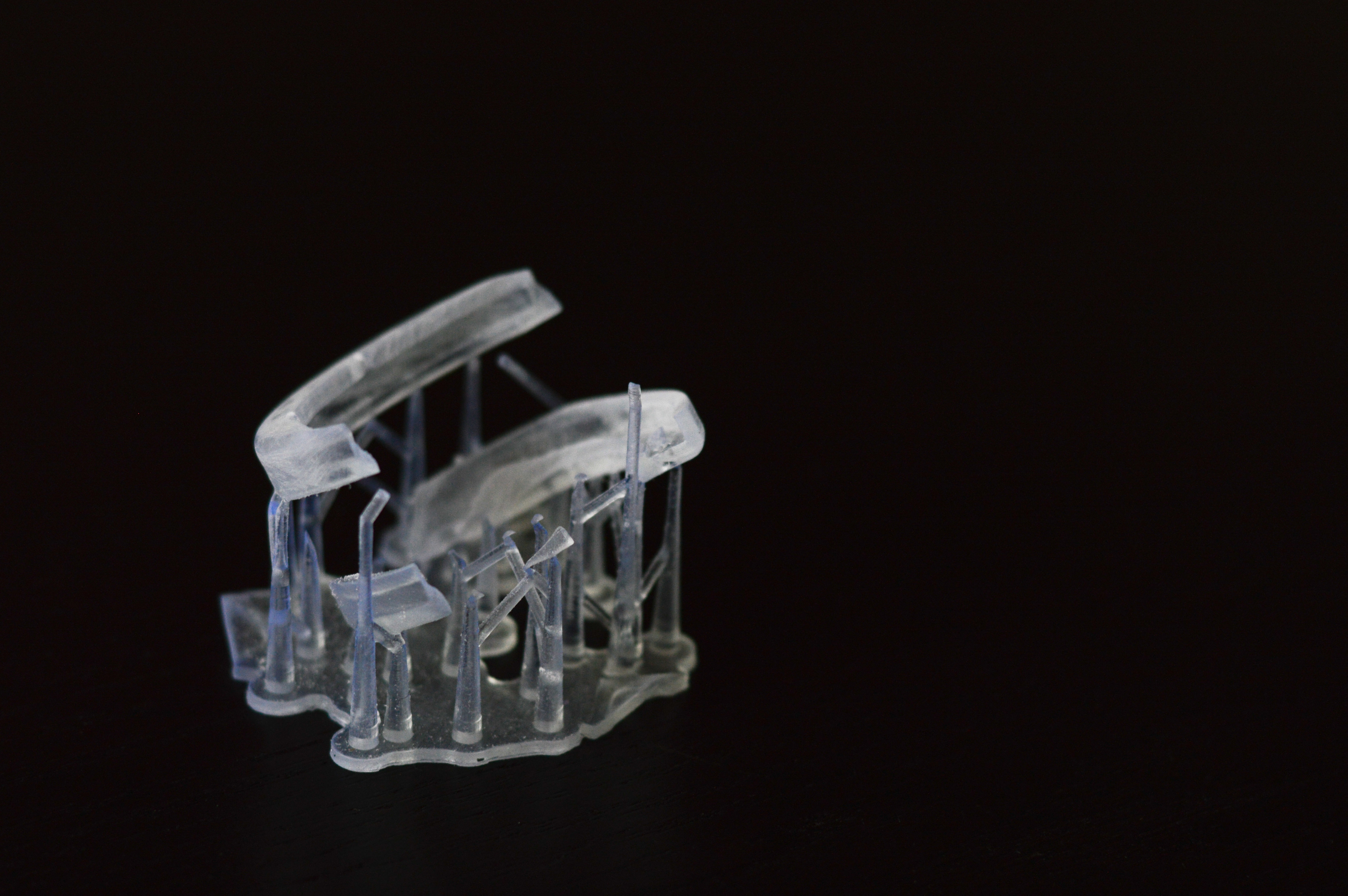
3D Printing and Beyond
Through my research, I incidentally discovered some of the limitations of SLA printing. SLA is the method of 3D printing that uses a UV laser to harden a vat of liquid resin one layer at a time. This method of printing makes it tricky to produce articulating parts that require a certain clearance between them, as the parts tend to fuse together during the printing process. It is also challenging to clean support material out of inner channels.Tackling such an open-ended prompt, I feel I only scratched the surface of 3D information design, and further exploration is definitely in order. Some other ideas thrown around the studio were making metal casts from 3D printed parts, designing for different abilities (e.g. blindness), using mechanical properties like friction to sort how easily different parts slide across a table, and scaling up these experimental interactions to cover larger data sets.
See my write-up over at Fathom.